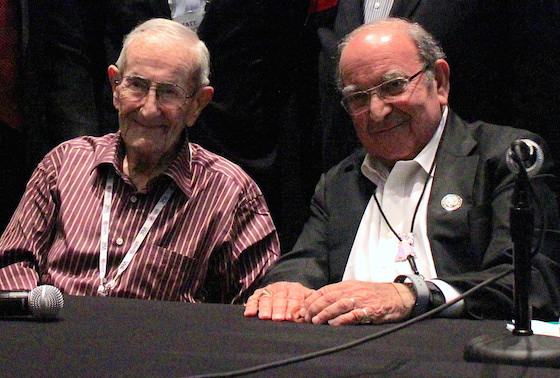If we kept a list of frequently asked questions on Theme Park Insider, that one would rank high upon it. Young theme park fans (and even some not-so-young-ones) often dream about turning their love for theme parks into a career designing them. But answering this question proves difficult, for the people who create parks took an almost countless number of paths to those jobs.
Perhaps that is appropriate, however, for designing great theme park attractions demands the ability to translate often-elusive dreams into practical, physical spaces. It's not the type of job for people who need a single, well-defined path forward to their goals.
In his latest book, One Little Spark!: Mickey's Ten Commandments and The Road to Imagineering, Disney Legend Marty Sklar includes comments and advice from 75 current and former Disney Imagineers who share their experiences on that road. It's like reading a Disney geek's dream discussion thread.
If you haven't heard Sklar's story and aren't familiar with the only Disney cast member who's been at the opening of every Disney theme park around the world, I would suggest starting with his 2013 autobiography, Dream It! Do It!: My Half-Century Creating Disney’s Magic Kingdoms." (Or take a few moments to read our Theme Park Insider interview with Marty Sklar.)

One Little Spark reads best as a companion to Sklar's earlier book. This isn't a biography, but a master class in theme park design. Before Sklar gets to the replies from his former coworkers, he reintroduces his core design principles for theme park attractions, which he calls "Mickey's Ten Commandments."
Sklar illustrates each "commandment" with the examples of an outstanding success — and a failure — for each. With the freedom to speak that a retiree enjoys, Sklar explains why certain Disney projects failed, or at least didn't achieve their full potential. As he did in Dream It! Do It!, Sklar takes a well-targeted shot at executives who let Disneyland start falling apart in the early 2000s, as well as Exxon managers who demanded 39 versions of the script of the old Universe of Energy show at Epcot before signing off. But Sklar directs fair criticism within Imagineering, as well, giving "The Goof" to Center Street at Tokyo Disneyland, "Le Visionarium" at Disneyland Paris, and even the initial entry design of Disney's Animal Kingdom, which led to backups as people stopped to figure out where to turn.
Sklar lets the leader of that design team, Joe Rohde, explain, "People are people. They aren't always going to cooperate with your highfalutin concept!"
In the back half of the book, the "Road to Imagineering," Sklar turns the pages over to his former coworkers, including Alfredo Alaya, Joe Herrington, Kathy Mangum, Elisabeth Erlandson, Kevin Rafferty, and dozens more.
There's no single road to a career in theme park design, but if there is a common theme expressed within the many stories shared here, Josh Gorin expresses it: "The most successful Imagineers are those who see 'this is new to me' as an opportunity, not a barrier. They are willing to outside their comfort zone in the interest of expanding their horizons and gaining new perspectives. ...Constantly ask questions, learn how things work, try new and exciting things, and you'll build up a strong base of experiences and an ongoing curiosity that will serve you well at WDI and in life."
You Might Also Like:
Support Theme Park Insider This Holiday Season:
Nighty Night....
This does not mean that there isn't a place for people like this in the design process. Designers can be like a group of mice with many water dispensers. They need people to control how much water they can have and which dispensers they can drink from. No matter your work style I guarantee there is a place in the Theme Park industry for you. Never be discouraged by what people say about barriers to entry, lack of creativity, etc. because building a theme park takes a village of all types.
Geez! Sorry! I didn't mean any disrespect! I never mean any disrespect! I'm sorry if anything I said or did was offensive! I always try to avoid personally insulting anyone when I refute them, otherwise I just lower myself to being just another internet troll. So, again, sorry if I rubbed you the wrong way, Anon.
This article has been archived and is no longer accepting comments.